#vlaakith clvii
Text


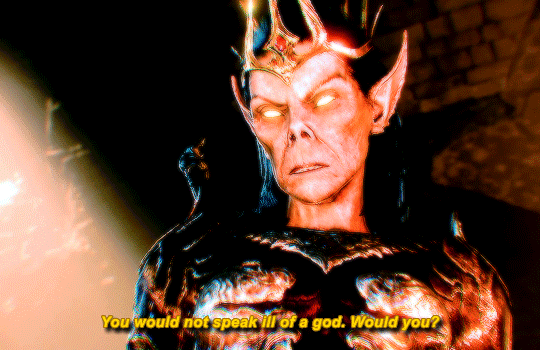


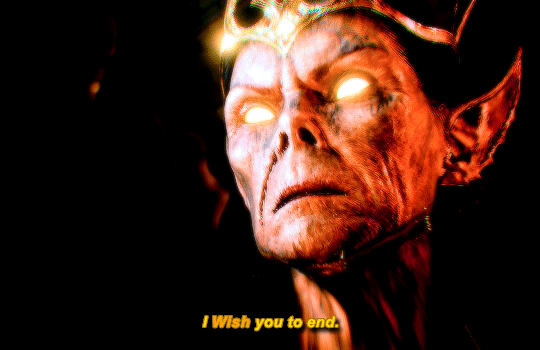

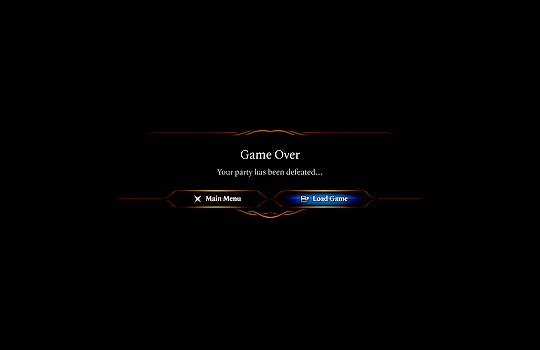
Live fast, die young, anger the lich queen enough for her to waste a Wish spell on you.
#bg3edit#bg3#gamingedit#vgedit#vlaakith#vlaakith clvii#Baldur's Gate 3#Baldur's Gate#faesedits#mybg#mybg3#*2023#oc: valen#i did this for science and bc it's funny but his story probs did end like this in at least one alternate universe
484 notes
·
View notes
Text


Regent of the six arms of Tu'narath & Prince of the Comet
257 notes
·
View notes
Text

Sketchy Vlaakith
/speech bubble is a meme phrase about an artifact from one russian game "gulman" which is quite legendary that this game is so bad that it makes it good
#bg3#baldur's gate 3#baldur's gate iii#baldurs gate fanart#baldurs gate iii#baldurs gate 3#baldurs gate#forgotten realms#baldur's gate#dungeons & dragons#dungeons and dragons#vlaakith#lich queen#Vlaakith CLVII#githyanki#bg3 githyanki#bg3 fanart#bg3 vlaakith
132 notes
·
View notes
Text
This game is so good, when I got to this scene I was stunned:
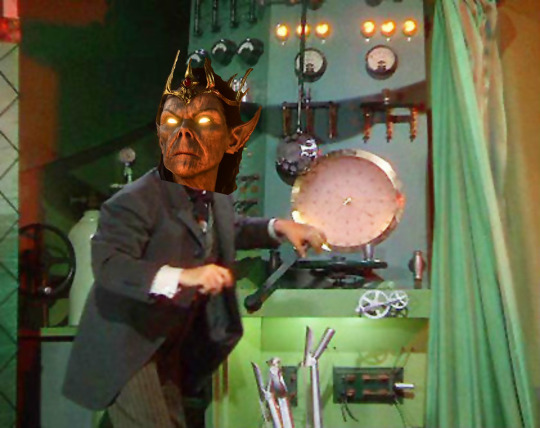
#baldur's gate#baldur's gate 3#bg3#vlaakith#Vlaakith CLVII#vlaakith 157th#vlaakith the lich queen#gith#githyanki#scratch pulling back the curtain was a good touch
6 notes
·
View notes
Text

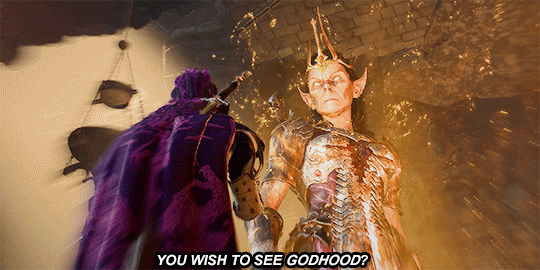


Tav: I just think a real god could kill whoever she wants.
#baldur's gate#baldur's gate 3#bg3#Vlaakith#bg3edit#gamingedit#the way I laughed#Me: All githyanki have mommy issues. Silviya: ...that is a statement.#Multiple Gifs#Multiple Gifs: Vlaakith CLVII#Multiple Gifs: Mirth de Winter#Multiple Gifs: Baldur's Gate#Character: Vlaakith CLVII#OC: Mirth de Winter#I love her so much. I've always wanted to do this one.#Media: Baldur's Gate#Nate's own stuff
50 notes
·
View notes
Text
thinking about her (Vlaakith II)
Who was sheeeee??
I’ve never been that wild about the existence of a “Vlaakith line” in DND canon. I just think it would go so much harder if current Vlaakith = OG Vlaakith warped beyond recognition by Aeons of Awful, and if they’re going to stick her on a near-timeless plane AND make her an immortal lich anyway… why not? Voss is still kicking around! But the line does exist in lore, so I am Thinking about it.
…I like the idea of Vlaakith I as the prototypical parthenogenetic gith more and more. I assume current githyanki parthenogenesis is magically mediated (which would explain why it doesn’t work like parthenogenesis in the real world), but maybe Vlaakith II’s conception wasn’t. Maybe she was an actual clone of her birth mother, and maybe every Vlaakith since her has been as well. It would definitely fit with that need to hold on to power.
#until Vlaakith CLVII goes “fuck that I’m not participating” and breaks the cycle#in the worst most horrific way possible but still - she did it!#(…maybe Vlaakith II was a New Mexico whiptail lizard-style baby with Gith)#(some lore sources do say the line claims “a supposed blood relationship” with her)#(I’m afraid I’m legally obligated to bring lesbian lizards up in every alien reproductive biology discussion)#vlaakith i#vlaakith ii#vlaakith
3 notes
·
View notes
Text
Githyanki History Timeline
After MUCH research, I present: a timeline of the history of the gith! Starting from their earliest known appearances in history, spanning multiple planes, and ending at "the present day." Sources below the cut.
The subterranean empire of Zarum is founded on the Material Plane world of Oerth. The gith inhabitants, likely originally human, are highly religious, live deeply ritualistic lives, and claim complete control over many other peoples.
A patron deity of the gith dies and is buried somewhere under the material plane world of Pharagos. Presumably this, and possibly other deaths, are why the gods didn't intervene in what came next.
The illithids invade from a parallel, destroying the empire and enslaving the gith. The gith are forcibly dispersed across many planes of existence. Some are taken to the planet of Penumbra, where they'll remain and miss out on the rebellion, remaining in the long term as the "forerunners."
The great rebellion: Gith leads her people to shatter the entire illithid empire across every plane and leave it in ruins.
The githyanki relocate from the Material Plane to the Astral Sea.
The city of Tu'narath is founded on the body of a dead god and the gith begin forging their famous silver swords.
If Baldur's Gate 3 is treated as canon, somewhere in here Gith's son Orpheus is born.
Zerthimon objects to Gith's attempts to continue a war now that the gith are free. A civil war of the gith ensues and they split into the githyanki (children of Gith) and githzerai (those who spurn Gith). In some sources this is called "The Pronouncement of Two Skies." The githzerai depart for the plane of Limbo. A small splinter faction, the githvyrik, break off from both sides.
Gith and Vlaakith travel to the Hells to negotiate for aid from the archdevil Dispater. He denies them, but the dragon goddess Tiamat accepts a deal for the souls of githyanki rulers in return for the service of red dragons. Gith remains in the Hells as the first sacrifice. Vlaakith returns to the Astral Sea as regent in Gith's name, carrying the Scepter of Ephelomon as symbol of the pact.
If Baldur's Gate 3 is treated as canon, Orpheus tries to overthrow Vlaakith and is imprisoned, thought dead by the general public.
The extended regency of the line of Vlaakith begins and will last for 156 descendants. Vlaakith promises the githyanki the Material Plane as a "garden" for harvesting. At some point, Zerthimon disappears and it's unclear exactly where he went. Suggestions range from enlightened transcendence to death to lichdom.
The faction of the gul'othran, githyanki who seek total conquest and death of all aberrations rather than mere raiding and plunder, appears.
At some point after this, a significantly-sized githyanki ship breaks through into the planar-locked world of Athas. It's stranded there and all aboard are mutated permanently by psionic energies of that world, with no way to get back. The ship is considered lost.
The forge of Kamyn-Dhun, where the best silver swords were forged, is lost by sinking into the ocean. The githyanki remaining there undergo magical adjustments to allow them to survive underwater in their now-sunken city.
Approximately 1,000 years prior to the present day, Vlaakith CLVII (157) undergoes a transformation to become a lich. She will reign unchallenged until the present day, when either the events of The Lich-Queen's Beloved will take place or the events of Baldur's Gate 3 will take place, depending on the setting.
Baldur's Gate 3, Larian Studios, 2023
Chainmail Miniatures Game: Blood and Darkness - Set 2 Guidebook
Dark Sun Campaign Setting, 2nd Edition
Dark Sun Creature Catalog, 4th Edition
Dawn of Night (Erevis Cale Trilogy, Book II, 2009)
Dragon Magazine #294 - Underground Scenarios
Dragon Magazine #298 - Vault of the Drow and Wizards' Workshop: Chainmail
Dungeon #100 - The Lich-Queen's Beloved
Dungeon #116 - The Death of Lashimire
Dungeon #125 - Seeker of the Silver Forge
Dungeon #168 - A Tyranny of Souls
The Illithiad 3, Masters of Eternal Night
The Illithiad 4, Dawn of the Overmind
Mordenkainen's Tome of Foes, 5th Edition
The Plane Above, 4th Edition
The Plane Below, 4th Edition
Planescape: Torment, Black Isle Studios, 1999
Polyhedron #159 - Chapter 5: The Invasion of Pharagos
#githyanki#baldur's gate 3#d&d#this leaves out some of the later stuff#like what happens AFTER lich-queen's beloved#if you wanna know that#get into the scales of war adventure path#utterly bonkers stuff#and this is just the stuff that runs up to the current vlaakith#her reign has had some WILD things going on
33 notes
·
View notes
Text
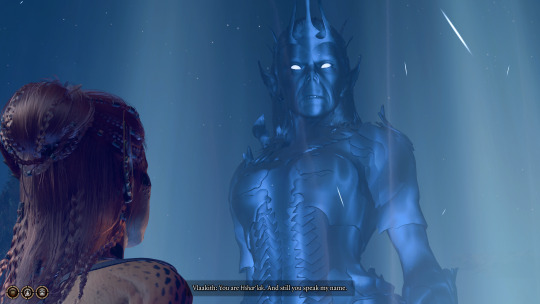
Imagine being a simple farmer in the outskirts of Baldurs Gate (c. 1492 DR), heading home after an evening at the pub, and witnessing the 30ft projection of the Lich-Queen Vlaakith CLVII of the Githyanki, yelling threats over your neighbor's property.
16 notes
·
View notes
Text
#bg3#baldur's gate 3#baldur's gate iii#baldur's gate poll#ketheric thorm#enver gortash#orin the red#raphael#myrkul#bhaal#vlaakith#bg3 emperor#bane#nere
49 notes
·
View notes
Text
Crackpot Headcanon: Vlaakith's 'Grand Design' for Lae'zel (and the Githyanki)
Back again on my raving bullshit for Baldur's Gate 3 (D&D and Forgotten Realms by relation), this time we're looking at the Lich Queen Tyrant, Vlaakith CLVII... cause I have lunatic thoughts of this bitch that fuel the fanfiction I write.
As with all my lunatic fandom ravings, spoilers abound for Baldur's Gate 3, associated materials, and course, take this all with COPIOUS amounts of salt. I get most, if not all, of my 'canon' info from the Forgotten Realms wiki and try to doublecheck the sources but I don't always have the time or means to.
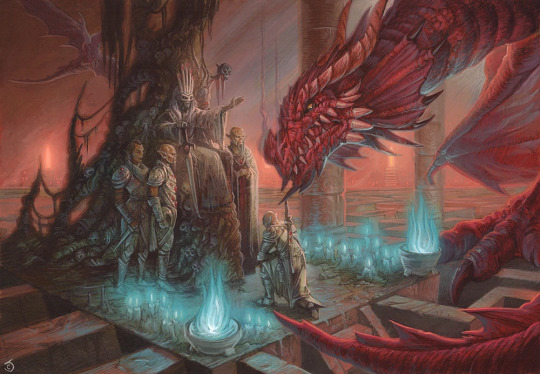
So what is known of Vlaakith is actually very little. The one in Baldur's Gate 3 is, presumably, the 157th githyanki to hold this title and has reigned for a thousand years (mostly as a lich). She has no known heirs and aspires to ascend to godhood (primarily through spam-casting Wish). D&D Lore is very sparse on the githyanki and even more so when it comes to nuances with the githyanki. They have existed since the days of AD&D (Advanced Dungeons & Dragons) but we didn't have much about them, canonically, for a long time.
So, lunatics like myself, let the brain worms fill in the blanks.
We know that Gith, for which the people get their namesake, was the figurehead and Leader of the rebellion that led to the toppling and near extinction of the Illithid Empire unknown millenia before. At her side, I believe both Vlaakith and Zerthimon assisted her (as advisors in different capacities... and to some unknown extent, her only 'confirmed' blood relative, her son Orpheus). As to their exact roles, it is unknown how Vlaakith advised Gith in the matters of her rebellion but given she is referred to as the first of a long series of Lich-Queens that rule the githyanki, her capacity likely involved her skill and knowledge in the arcane/Weave.

After the rebellion, it is believed Gith and Zerthimon fell to infighting, as Gith presumably was so consumed with righteous fury, she single-mindedly wanted to continue hunting down the remaining illithids while Zerthimon, seeing they had won, wished to carve a new life for the 'gith' now that they were free.
In my deranged mind, I suspect/believe that the Proclamation of Two Skies (how the gith refer to their civil war that led to the creation of the -yanki and the -zerai) was stoked and brought to fruition by Vlaakith I. She was always manipulative and concerned, primarily, with her own ambitions. Having witnessed how Gith roused and united the gith, how they called her 'mother' may have stoked jealousy in Vlaakith and so she conspired to take that power and reverence for herself, especially under the suspicion I have that Gith and Zerthimon were lovers/mates (I wrote a theory pointing at Orpheus may be their son).
Vlaakith conspired to turn Gith and Zerthimon upon each other but her plan had an unintended consequence; the division of the gith people into the Githyanki and the Githzerai (and with time, further fracturing in the form of Pirates of Gith, Sha'sal Khou and the Githvyrik (dunno how canon this is anymore because only occurs in one novel)). However, Vlaakith saw an opportunity in this fracture; Gith to be the sacrificial lamb on the altar of her ambitions.
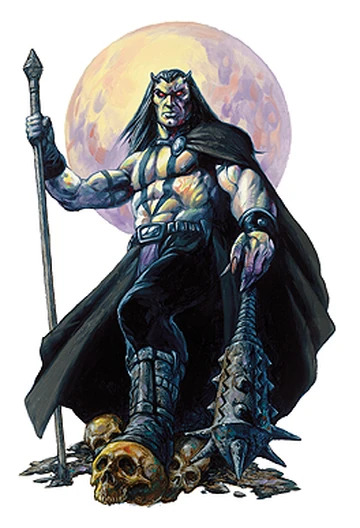
It's believed Vlaakith I's first attempt at bargaining with Baator (The Nine Hells) was seeking a pact with Dispater. However, Vlaakith's attempt(s) failed for one reason or another... likely because Dispater is far more paranoid than Vlaakith is and saw no merit in a deal with such a conniving creature.
Having failed in bargaining with the Lord of Dis, Second Layer of Baator, Vlaakith found herself bargaining with Tiamat. It is, still, unknown the terms of their pact (or how she even got to bargaining with the Chromatic Dragon Queen to begin with) but the bargain was successful and Gith ended up being part of the price.

After the githyanki retreated into the Astral Plane, since the civil war left them weakened (and the githzerai went to Limbo), Vlaakith convinces Gith to travel to Avernus (First Layer of Baator), likely with promises that fed into Gith's violent ego and giving no indication that Gith was not going to make it back. With the bargain paid, Tiamat imprisoned Gith among her hoard (presumably) while Vlaakith returned to the githyanki on the back of Ephelomon, Tiamat's Chromatic Red consort. Together, the two convinced the githyanki that Gith had martyred herself in the bargain and commanded that Vlaakith guide and rule their people in her absence.
This is where the canon gets messy, as there appears to be a discrepancy in the order of events. In the 5e Monster Manual, it suggests Vlaakith sealed the bargain with Tiamat before the Proclamation of Two Skies happened. Texts like Mordenkaine's Tome of Foes suggests the bargain with Tiamat was struck after the split. I'm more inclined to agree it happened after, since the Githzerai and other non-yanki Gith do not benefit from the terms of the pact (mainly the access to Red Dragons)
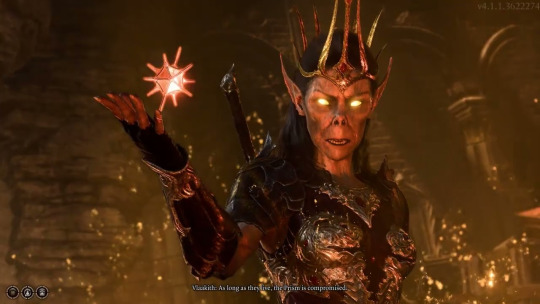
So, what's this all got to do with the current Vlaakith?
Vlaakith CVII is more than I (want to) believe Larian has told/shown us.
Like her namesake, Vlaakith CVII is a lich that has, supposedly been in power for, roughly, a thousand years by the time the events of Baldur's Gate 3 happen. She upholds the teachings, protocols, and ambitions of her originator and predecessors yet has no known heirs (blood relative or otherwise).
My crazy idea is that Vlaakith CVII is actually Vlaakith I... and all other holders of the 'title' before her have just been Vlaakith. Vlaakith is too vain and ambitious to let something like death get in her way and likely sought every means possible to buy herself the time she needed to achieve her ultimate ambition; Godhood.
Vlaakith's insanity is well in line with the 'canon' behavior of liches, especially 'long-lived' ones. Now, she is just a creature driven by the all-consuming desire to ascend and achieve the ultimate power by any means necessary.
Ascending to divinity/godhood in D&D is... not very clear. The primary factor is faith, as a god needs followers to thrive and derive power from. By controlling the githyanki in all aspects of life, establishing castes like the Inquisitors to hunt down and silence dissenters, sealing Prince Orpheus within the Astral Prism (and infernal chains), using Gith's name and 'sacrifice' as a catylst to keep the people's devotion on herself... but this is a slow process so Vlaakith also encouraged and regulates the militaristic structure of githyanki society to produce powerful warriors that she can, later, consume and sacrifice in her spam-casting of the Wish spell and whatever other means she uses those poor souls for (aside from the husks she keeps)
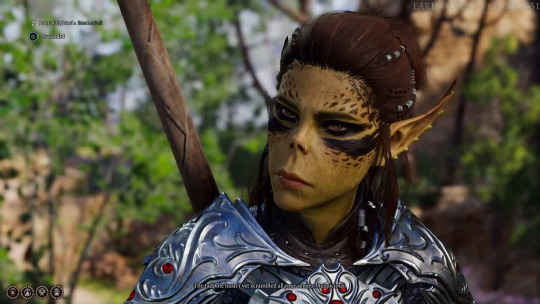
So, how and why does Lae'zel factor into all of this?
Literally, this is all because of one dialogue line Vlaakith gives in Act 3 of Baldur's Gate 3: Promising to make Lae'zel Baht Vlaakith, the Commander of Dragons; her Chosen (despite having no true divine power). She offers Lae'zel's greatest ambition; to be Kith'rak, to ascend beyond even the standards of her people and serve at Vlaakith's feet.
Weird thing to say to someone you can just Thanos-snap from existence, which Vlaakith does if your party refuses to comply with her at Creche Y'llek. (Seriously, this woman will waste a Wish on you just to remove the entire party from existence for 'waving hello' at her)
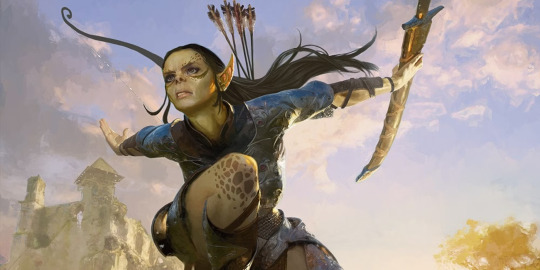
Vlaakith has determined Lae'zel as her 'heir' and needs her to return so that she may possess/control her (either through the use of spells like Domination or something more sinister, like excising her soul and possessing her body; no clue if liches can do this). I believe some githyanki that held the title of 'Vlaakith' were simply thralls to Vlaakith I, enhancing her duplicity to make it seem like the title passes on between individuals (despite having NO information on how this is determined within githyanki society).
The only other 'brain worm' I have about why Vlaakith attempts to bargain with Lae'zel one more time about killing Orpheus instead of, I dunno, simply Wish-murder the party, is there is something important about Lae'zel that not even the githyanki herself is aware of. Not to the degree of a psionic null zone but perhaps something Vlaakith has been nurturing through controlled breeding to accelerate her consumption of power... or as an offering to Tiamat.
Hells, if you talk to Withers in the Epilogue about the fate of a Vlaakith aligned Lae'zel... he says she's just gone. Her soul no longer exists.
A fate worse than death and Lae'zel went to it, oblivious.
Yep, there it is... more cracked brainworm thoughts for Baldur's Gate 3.
I'm also not a fan of Vlaakith but hey, I feel like there needs to be way more depth and analyzing some of this stuff my brain just does on its own.. and it fuels my fan-fic writing (which you should totally check out)
I hope folks are enjoying my insane ramblings.
#baldur's gate 3#fan theory#crazy fan theory#the brainrot is terminal#vlaakith I#theorycrafting#baldurs gate 3#lae'zel
17 notes
·
View notes
Text
My dealer: got some straight gas 🔥 😛 this strain is called “the fall of the Githyanki Empire” 😳 you’ll be zonked out of your gourd 💯
Me: yeah whatever. I don’t feel shit.
5 minutes later: dude I swear I just saw Orpheus in the astral prism
My buddy Kith’rak Voss pacing: Vlaakith CLVII is lying to us
9 notes
·
View notes
Text
Fandom: Baldur's Gate (Video Games)
Rating: General Audiences
Characters: Lae'zel (Baldur's Gate), Vlaakith CLVII (Dungeons & Dragons)
Additional Tags: Filk, lyrics, Song Lyrics, Inspired by Music, Led Zeppelin References, Album: Led Zeppelin III, Song: Immigrant Song, bardsong, I wish I had bard skills, brainrot, No Spoilers
Summary: The first Lae'zel filk song on AO3!
A humble bardsong written about Lae'zel's origin story to the melody of 'Immigrant Song' by Led Zeppelin.
#lae'zel#bg3#filk#baldur's gate 3#lyrics#parody#led zeppelin#immigrant song#bae'zel#githyanki#bg3 fanfiction#inspired by music#vlaakith
5 notes
·
View notes
Text
~ complaining 🎶 about 🎶 stuff ~
Larian (or maybe wotc forced them, idk) really did a really horrible job with Gith Lore (the races, sand the character herself). LIKE The current Vlaakith (technically VIaakith CLVII/157) isn't not the same Vlaakith who ruled the githyanki after Gith disappearance, who is Vlaakith the first. BG3 acts like they are the same person when they are not. OR they do a shit job at explain the ruling situation of the githyanki.
All queens (and they've only had queens) are githaynki renamed Vlaakith when they are titled as such. They are all also liches.
have they done things to make this more clear? haven't looked at the gith stuff in game in a while.
ALSO Gith herself was an evil war-lording genocidal slaver. So her son, who wants to get the githyanki back on track for what Gith wanted for them- would be a horrible thing. Gith wanted to rule the entire multiverse through imperialism (by taking over the Illithid empire), wanted to slave all races in realmspace that where not githyanki. And committing genocide against the mindflayers. AND genocide is literally always wrong there is no wiggle room, nuance, or gray area.
Also Orpheus was just created for bg3 and has no outside lore.
The githzerai would not want to work with agents of her son because "githzerai" literally means "those who scorn Gith" if the first Vlaakith was the problem then they would be "vlaakithzerai"
AND AND the splinter being the githyanki and the gothzerai happened BEFORE the rule of Vlaakith the First because Gith and Zerthimon fought each other in combat over their ideals of how the gith people should live, Gith wanting them to become the oppressors, and Zerthimon wanting their people to live in peace with others.
Gith is about continuing the cycle of violence and Zerthimon is about breaking the cycle of violence.
Anyways freeing Orpheus is the evil choice. The githzerai would never side with him because the issue was with Gith and not Vlaakith (the first).
0 notes
Photo

"I have devoted my life to my Queen. I will be her chosen. It is my due!"
↳ Baldur's Gate III // Lae'zel // Procreate
Exploring the relationship between Lae’zel and her Queen. I wanted to paint how indoctrination felt like. I would also love to see Lae’zel learn about what Vlaakith CLVII really does to some of her “chosen” in her story arc…
#Baldur's Gate 3#Baldur's Gate III#BG3#Lae'zel#I love Lae's character too much to see her be swept up by the machinations of a paranoid and insane lich#I don't know what kind of crown Vlaakith wears so this will do#anyway I hope you like it#this was fun to make#it's a bit... wild#whoops 🙈#*KDart#*KDportraits#*BGIII
73 notes
·
View notes
Text
(Almost) Everything You Need to Know about Githyanki...
Githyanki are an ancient race descended from humans. They dwell on the Astral Plane but often leave that plane to make War on other races. They are engaged in a lengthy war with the githzerai.
Githyanki speak only their own tongue.
Githyanki are strongly humanoid in appearance. They are of approximately human height but tend to he much more gaunt and long of limb. They have rough, yellow skin and gleaming black eyes that instantly betray their inhuman origins.
Like many demi-human races, their ears have sharp points and are serrated at the back. Dress for the githyanki is always an elaborate affair. Their baroque armor and weapons of war are decorated with feathers, beads, and precious metals and gems.
Githyanki Knights
Githyanki Knights are evil champions who take up the causes of the githyankis’ mysterious lich-queen. Githyanki Knights are very powerful and highly revered in their society.
In older editions, they had all of the powers and abilities of a paladin, except these are turned toward evil (e.g. detect good instead of detect evil, command undead instead of turning undead).
Basically, Githyanki Knights might be seen more as Oathbreaker Paladins in terms of ability...Commanding undead and all that...
And in some Lore supposedly this is some blessing from the Lich-Queen, but other lore suggests that it's their connection to the Astral Plane, which is a common resting place for the Souls of the Prime Material Plane.
Githyanki Soldiers
The githyanki soldiers use arms and armor similar to humans; however, these are normally highly decorated and over time have become almost religious artifacts. A githyanki warrior would likely show greater care for his weapons and armor than he would toward his mate.
Silver Swords
Githyanki never willingly allow a silver sword to fall into the hands of a non-githyanki. If a special silver sword should fall into someone’s hands, very powerful raiding parties are immediately formed to recover the sword. Failure to recover one of these highly prized weapons surely means instant death to all the githyanki involved, at the hands of their merciless lich-queen.
Githyanki mages and illusionists receive some pretty nasty offensive spells, since Githyanki are, by nature, creatures of destruction - so offensive spells preferred.
Githyanki Raiding
All githyanki have the natural ability to cast Plane Shift At-Will, which is pretty badass. They rarely travel anywhere besides back and forth from the Astral Plane to the Prime Material Plane.
They refer to using Plane Shift as 'Jez'rathki' or 'seeping through the cracks'...
Occasionally githyanki raiding parties venture onto Limbo to strike at the githzerai, but their targets are only wandering githzerai; they have made no organized attempt, thus far, to attack the githzerai city-fortresses there.
Thus far that is... Since there have been many D&D Campaigns focused on this War between the Gith... And the chances of destruction of one or the other...
Githyanki Society
History provides some information on the githyanki - their race is both ancient and reclusive. Sages believe they once were humans that were captured by mind flayers to serve as slaves and cattle.
The mind flayers treated their human slaves cruelly and the people harbored a deep hatred toward the illithids.
For centuries these humans nursed their hatred but could not summon the might necessary to break free. So they waited for many years, developing their powers in secret and waiting for an opportunity to strike out against their masters.
Finally, a woman of power came forth among them, a deliverer by the name of Gith. She convinced the people to rise up against their cruel masters.
The struggle was long and vicious, but eventually the people freed themselves. They had earned their freedom and become the githyanki (which, in their tongue, means sons of Gith).
When a githyanki advances in their society, he is tested by the lich-queen. This grueling test involves survival in one of Lower Planes for a number of weeks. Failure quite obviously results in death.
Githyanki that reach a certain level of experience are immediately drawn out of the Astral Plane and into the presence of the lich-queen, where their life force is drawn to feed the ravenous hunger of the cruel demi-goddess.
Githyanki Strongholds
Githyanki dwell in huge castles on the Astral Plane. These ornately decorated castles are avoided by all other dwellers on the Astral, for the githyanki are infamous for being inhospitable to strangers.
A githyanki stronghold is ruled by a supreme leader.
This leader is either a fighter or a mage of 8th to 11th level.
The supreme leader is the undisputed overlord of the castle with the power of life and death over all who dwell there.
A typical leader is equipped with 2-8 random magical items in addition to the weapons described above.
All castles have a retinue of 20-80 githyanki knights that serve as the supreme leader’s elite shock troops. They are fanatically loyal. There are also up to 1,000 githyanki of lesser status.
Githyanki, having the ability to Plane Shift At-Will, sometimes travel to the Prime Material. These treks across the planes often lead to the formation of underground lairs used to mount surface raids, though their hatred is more often directed against mind flayers. Outside the war with the githzerai, these raids are conducted largely for the perverse pleasure of the kill.
Githyanki and Red Dragons
On the Prime Material Plane, githyanki have a pact with a group of red dragons. These proud creatures act as mounts and companions to the githyanki. When encountered on the Prime Material Plane and outside their lair, such a group usually has two red dragons as steeds, who are able to transport between four and six githyanki per dragon.
The dragons fight for the safety and well-being of the githyanki but do not directly risk their lives, fleeing when the battle is turned against them.
Just what the githyanki offer these red dragons in return for their services is unknown.
The Githyanki Bond
An interesting aspect of githyanki society is the apparent bond between military leaders and their subordinates. This bond allows a leader to give his men short, almost senseless commands and actually relay complex and exacting messages.
Although this has no actual affect during combat, it often leads to more effective ambushes and attacks and allows complex military decisions to be relayed quickly.
Ecology of the Githyanki
Githyanki have similar ecology to that of humans. However, the Astral Plane does not offer the same type of environments as the Prime Material Plane, so their cultural groups are very different.
In a society where farmers and tradesmen are unnecessary more unique, specialized groups have evolved.
G”lathk: The g”lathk, (admittedly nearly unpronounceable by human tongues) are the equivalent of farmers. Due to the barrenness of the Astral Plane, the githyanki are forced to grow food in vast, artificial chambers. They rely upon a variety of fungi and other plants that require no sunlight to grow.
The g”lathk are also experts in aquatic plantlife, sometimes tending gigantic water-gardens.
Mlar: Not all magic-using githyanki ever attain the power and self-discipline necessary to become wizards. Some use their magical talents in the field of architecture and construction.
The Mlar are such individuals, focusing their creative energies toward designing and constructing the buildings and structures used in day-to-day life in githyanki society.
The Mlar have developed their jobs into an art form.
Hr’a’cknir: The Astral Plane has many strange energies moving through it. Some of these energies are obvious to the senses such as heat and light. Others are not so easily observed.
There are many psychic and strange astral energies that humans generally cannot sense.
As a psychically aware race, however, the githyanki cannot only sense these energies, but can harness them also.
The hr’a’cknir are the collectors of those energies.
They are similar to the Mlar, in that they use innate magical powers to perform their crafts.
Tl'a'ikith: One of two species of undead githyanki, created by Vlaakith CLVII through the powers of the Crown of Corruption, with the other being the Kr'y'izoth.
Created from githyanki warriors, predominantly Fighters and Rangers, Tl'a'ikiths are much more common than their kr'y'izoth counterparts, but are usually kept on Tu'narath or other githyanki strongholds as elite guards.
These undead githyanki appear as pale, spectral versions of their former living selves, still wielding their race's trademark silver swords. They never speak, instead simply obeying whatever orders they have been given.
Kr'y'izoth: Created from githyanki wizards, sorcerers and warlocks, kr'y'izoths appear as emaciated and charred githyanki shrouded by an aura of flickering, shadowy-black flames of necrotic energy. These flames obscure their features; even those who knew the creature in life are often hard-pressed to recognize them in death. They speak in a hollow, clipped tone of voice.
Ironically, they're described as far more social and versatile than Tl'a'ikiths are, which means the lich-queen uses them as high-level troubleshooters. With their additional ability to magically heal others, this means that Kr'y'izoths are often attached to elite githyanki units, and so can be found across the Astral and on other planes as well as guarding Vlaakith's palace on Tu'narath.
Githyanki are hunters and predators. They typically engage in raiding and plundering seemingly for the joy they derive from it. It is likely that the long centuries of enslavement of their race has caused the githyanki to bully those weaker than themselves.
Unlike humans, though, the githyanki never war among themselves. The split of the githyanki and the githzerai is the closest thing the gith races have known to civil war.
Githyanki never battle githyanki. It is the unwritten rule of gith society and is never broken. This, too, may be an effect of the race's enslavement.
55 notes
·
View notes